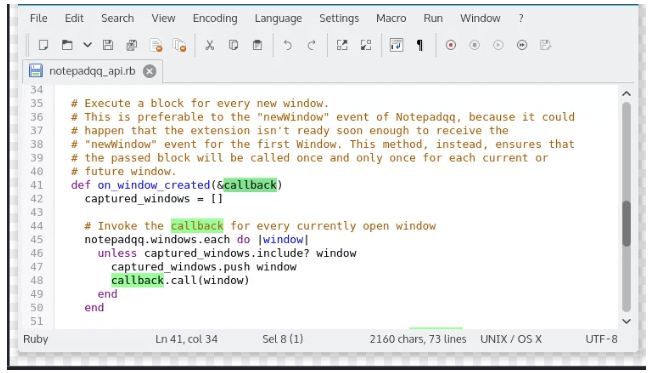
- CAN ANYONE OPEN A MAC NOTEPAD FILE HOW TO
- CAN ANYONE OPEN A MAC NOTEPAD FILE SOFTWARE
- CAN ANYONE OPEN A MAC NOTEPAD FILE WINDOWS
To read a CSV file, you don’t have to assign the output to a variable. Read the CSV file with the Import-Csv cmdlet and assign the output to a variable called $addr. To remove this, use the NoTypeInformation parameter.Ģ. The only difference being when you create the CSV with the Export-Csv cmdlet, it will, by default, add a line at the top of the CSV that looks like #TYPE.
CAN ANYONE OPEN A MAC NOTEPAD FILE WINDOWS
Windows PowerShell users: This demo will work nearly the same with Windows PowerShell also. Related: Managing CSV Files in PowerShell with Import-CsvĪssuming you still have that c:\temp\Address Details.csv CSV file created earlier: Similar to creating a CSV file using the Export-Csv cmdlet, PowerShell has an Import-Csv cmdlet which does the opposite it reads an existing CSV file. Using PowerShellįor the final demo, let’s jump into using PowerShell to read and edit a CSV file. If you’d rather the Edit menu option opens the CSV file in another program, change the Windows default application. This text represents CSV data and contains three columns (Name, Address, and Email) with two data rows one row for Joe Bloggs and one row for Jane Bloggs. Copy and paste the text below into the blank file. Open Notepad which will open a blank file.Ģ. To create a simple text file using a plain text editor (Notepad on Windows):ġ.
CAN ANYONE OPEN A MAC NOTEPAD FILE SOFTWARE
One of the easiest without any fancy software is to use Notepad if you’re on Windows. There are many ways to create a CSV file. Throughout this article, you’ll use this CSV file across various demos.

Let’s start by creating a simple CSV file to use as a demonstration. If you’d like to follow along with the examples in this tutorial, you’re expected to have Microsoft Excel (any recent version) and PowerShell (any version). If you’d like more advanced features like syntax highlighting (different colors representing different items), you can use more advanced editors such as Notepad++, VSCode, Vi, or EMACS. This article will assume you have access to a simple text editor such as Notepad on Windows or Nano on Linux or Mac systems. But, before you get too far, the tutorial expects you to meet a few prerequisites first.
CAN ANYONE OPEN A MAC NOTEPAD FILE HOW TO
It’s now time to learn how to build and edit CSV files. If double-quotes are used to enclose fields, then a double-quote appearing inside a field must be escaped by preceding it with another double quote.ĬRLF stands for “Carriage Return/Line Feed” which is a formal definition of the end of the line in a text file Prerequisites.Fields containing line breaks (CRLF), double quotes, and commas should be enclosed in double-quotes.Each field may or may not be enclosed in double quotes style quotation marks.Within the header and each record, there may be one or more fields, separated by commas.An optional header line appears as the first line of the file with the same format as normal record lines.The last record in the file may or may not have an ending line break (CRLF).It has records located on a separate line, delimited by a line break (CRLF).

In a nutshell, this RFC tells us that a CSV file has a few attributes.

To ensure CSV files always follow a particular pattern, the Internet Engineering Task Force (IETF) defined a Request for Comment (RFC) that defines what a CSV file should look like with RFC4180. It wasn’t until 2005 that a formal definition for the CSV file was added by the Internet Engineering Task Force (IETF) in Request for Comments RFC4180. Example CSV of cars shown in Microsoft Excel Formal DefinitionĬSV files have existed even before the personal computer being handled by IBM’s Fortran compiler as far back as 1972 and used in the SuperCalc spreadsheet as far back as 1983.


 0 kommentar(er)
0 kommentar(er)
